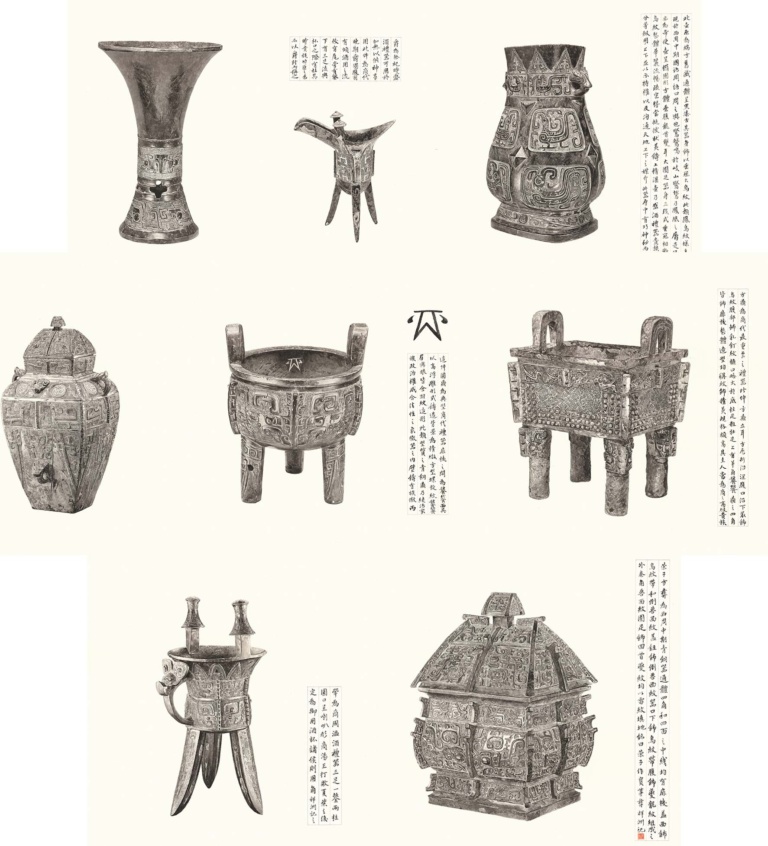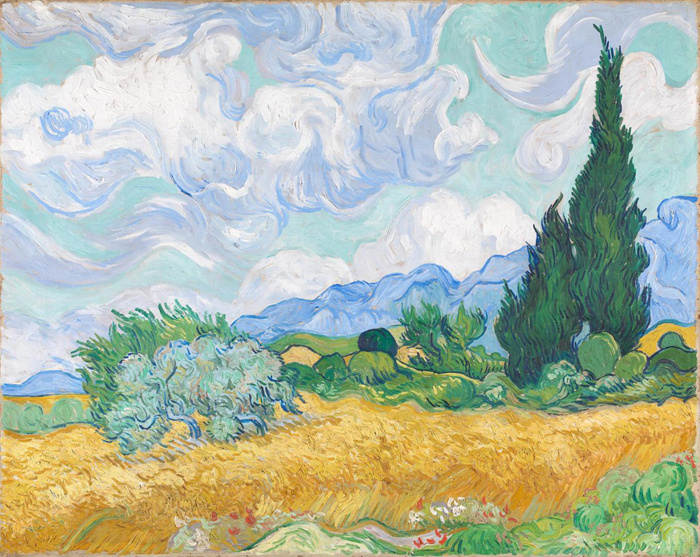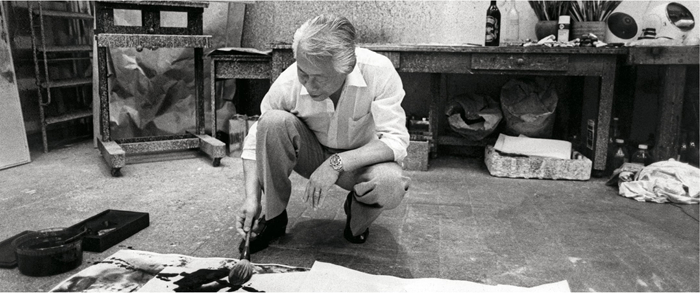On 7 March 2025, the Museum of Fine Arts, Chicago, USA, will host a solo exhibition of Tai Xiangzhou's work, "The Edge of Goldstone" (Affirmation of Stone and Metal), the exhibition will focus on the theme of bronze and jade, with Tai Xiangzhou's ink paintings presenting his in-depth research and artistic expression of ancient artefacts.
Curated by Tao Wang, curator and Pritzker Chair of Asian Art at the Art Museum of Chicago, the exhibition will feature six new works by Tai Xiangzhou, including three paintings from the series Da Dao Ji Jin Tu, which focuses on bronzes, Xuan Gui - Pictures of Liangzhu Jade in the Hong Hong Collection, and Ding Yi Tu, which is centred around bronze ceremonial and symbolic artefacts, and The Cannibalistic Tiger Wine Container". These works combine Tai Xiangzhou's research on archaeology, historical documents and art history to present the visual aesthetics, cultural symbolism and historical significance of ancient artefacts in ink paintings. In his curatorial work, curator Wang Tao has always been concerned with the international dissemination and contemporary interpretation of ancient Chinese art, and the juxtaposition of the paintings and the collection allows the viewer to feel a cultural connection across time and space between the real objects and the contemporary paintings.
From "Tianxiang" to "Jinshiyuan": Tai Xiangzhou's Artistic Evolution
Tai Cheung Chau has been associated with the Art Museum of Chicago for many years, and in 2015, the museum's Department of Asian Art acquired his work Sky Image 2014.1, making it the first work by a living Asian artist to be included in the museum's collection in its 140-year history. This work was later included in The Fine Collection of Paintings in the Collection of the Art Museum of Chicago, written by curator James Rondeau and published by Yale University.
In 2021, he organised the exhibition "Heavenly Paths of Illumination" at the Art Museum of Chicago, which centred on cosmology and astronomy, using ink and watercolour paintings to show how humans understand the relationship between reality and illusion through visual experience. During the exhibition, he discussed the significance of bronze culture in contemporary art in a dialogue with Wang Tao, art historian Wu Hung, and an expert on East Asian art at the University of Chicago.
In the dialogue, Tai Xiangzhou said: "Bronzes are not just cultural relics, they carry beliefs, rituals and social order. They used to be symbols of power and a medium of communication between man and heaven and earth. How to bring these ancient artefacts back into contemporary culture and visually establish a new monumentality is something I have been thinking about." For his part, Wu Hong pointed out that Taixiangzhou's creations, while inheriting traditional Chinese art, give a new sense of time to the museum space, allowing the image of the bronzes to transcend the historicity of the artefacts and enter into a discussion of the contemporary nature of art.
Research and Discernment: Tai Xiangzhou's Artistic Practice
Tai Xiangzhou's artworks are not only painting creations, but also a kind of cultural research. His research spans archaeology, art history, ancient literature and calligraphy, on the basis of which he has constructed a unique art system. His doctoral thesis, "Looking Up at the Hanging Elephant," delves into the cosmology of early Chinese landscape painting and establishes a link between painting, concepts and rituals with the theories of celestial phenomena and tool-making. In his dissertation, he argues that the concept of "making vessels with images" not only dominated the form and function of bronze and jade, but also profoundly influenced the way Chinese painting was structured.
Tai Xiangzhou has long studied the evolution of bronze inscriptions and image systems, exploring how these objects have served as a medium for power, religion, ritual and cosmology, and giving them new contemporary meanings through ink painting. His representative studies include "The Evolution of Bronze Images and Concepts from the Drawing of Xiao Chenzi Wine Containers", which analyses the development of bronze decoration and explores how its symbolic system influenced ancient Chinese thought systems.
How art carries a thousand years of civilisation
In his creations, Tai Xiangzhou has always been thinking about how art can carry a thousand years of civilisation in contemporary times. And he uses his works as a kind of cultural archaeological experiment to reinterpret the cultural significance of these artefacts. In "Xuan Gui - Red Rainbow Collection of Liangzhu Jade Artifacts", he depicts the subtle divinity of the jade artifacts at the beginning of the faceting process with extremely delicate brushstrokes, making the painting a continuation of the spirit of the jade artifacts. Bronze works, on the other hand, give new visual power to symbols such as taotie motifs and inscriptions. Ancient artefacts are no longer just static objects in museums, but also artistic expressions that can be reinterpreted in the context of contemporary culture.
Exhibition Information
Exhibition title:inscription on metal and stone Affirmation of Stone and Metal
Artist:Tai Cheung Chau (place name)
Curator:Wang Tao (Pritzker Chair of Asian Art, Art Museum of Chicago), Seung Hee Oh (Assistant Curator of Chinese Art, Art Museum of Chicago)
Exhibition Venue:Chicago Art Museum
Opening time:Letter dated 7 March 2025 from the Permanent Representative of
Exhibition cycle:4 March-16 June 2025
Works on display(For long pictures, please turn your mobile phone to the right.)

One of the Great Dao Jijin Drawings Bronzes in the Collection of the Museum of Fine Arts, Chicago
Ink on paper 60×600cm Tai Xiangzhou 2024







